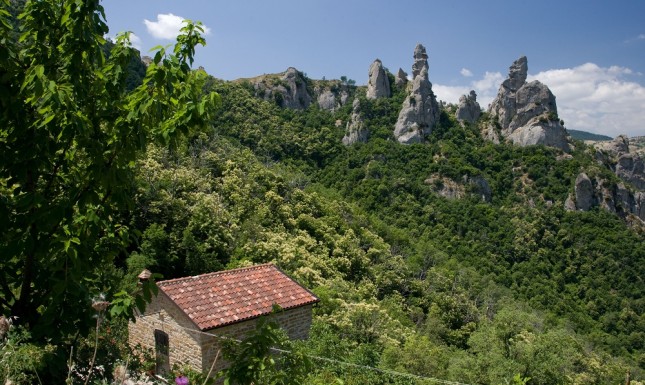Franchising, retail, business

20/11/2015
Loganica, ravioli alla potentina, cutturidd and lampasioni among its signature dishes
Basilicata, a small region set between two seas, the lonian and the Tyrrhenian, has a centuries-old gastronomic tradition. The recipes often have roots in the distant past. Few people know, for example, the reason why in many Italian sausages are called “luganiga”. The word comes from the Latin lucanicam, i.e. “sausage of Lucania”, and the production of this sausage began in the times of the Romans, or maybe earlier, here in Basilicata, when the region was known as Lucania, its Latin name. It is mentioned in the works of Apicius, Martial and Varro. The secrets of this ancient farming civilization have been passed down to the present day, to become resource for us all.
Basilicata is a land rich in tradition, where the cuisine is a skilful combination of simple and genuine products, shunning the sophisticated preparations of modern gastronomy. An example of this is in fact that only olive oil is used as if it were a kind of cheese. Despite the similarities of some dishes with those of neighbouring regions, the originality of Basilicata’s cuisine is to be found in its capacity to extract flavour from even the simplest ingredients, and to use spices to make even the humblest dishes tasty.
Vegetables are often eaten as first course, either on their own or accompanied with pulses or pasta, in dishes such as broad beans and chicory, fresh almond shells with turnip tops, and wild chicory in beef stock. The pulses, cereals, vegetables and aromatic herbs are at the basis of strongly flavored and yet balanced dishes.
Pasta, traditionally handmade using durum wheat, salt and water, is one of the pillars of the region’s cuisine, and comes in a vast array of different types, where shapes and names are limited only by the cook’s imagination. There are also interesting types of stuffed pasta, such as ravioli alla potentina, stuffed with ham, ricotta, parsley, egg and pepper. From Matera come calzoncini, small semicircular pastry parcels filled with ricotta, sugar, cinnamon and nutmeg.
Cheeses also represent a current motif on tables throughout the region, and are all of excellent quality, especially those made using sheep’s and goat’s milk. Pecorino lucano, produced with 70% sheep’s milk and 30% goat’s milk, matured for between three months and a year, is a cheese of exceptional taste and quality. A famous gastronomic invention from the region is the sausage, already known in ancient Rome.
Excellent sausages are produced throughout Basilicata, and can be eaten fresh or matured, or even conserved in oil or lard. Soppressate, sausages of pork cut by hand using the tip of a sharp knife, dried and then preserved in extra virgin olive oil, are an excellent example of the care dedicated to sausage production. When you have the chance to taste local specialties in a restaurant or farm, make sure you try pezzenta, a sausage made using pork off cuts.
Mutton and goat are traditional favourites, barbecued, stewed or roast. The preparation of stews requires a certain skill on the part of the cook, who must ensure the correct proportions of the ingredients and understand when the dish is ready to be served. Cutturidd (stewed mutton), a traditional shepherd’s dish, is prepared in terracotta dish, or in heavy aluminium pans. Ragù, the ideal sauce for many types of pasta, is cooked using three different types of meat: lamb, pork and kid which are first sealed and browned and then cooked in tomato sauce. The result is a real delicacy. Chilli, whose use is widespread throughout the region, is always used with moderation, so that its taste is pleasant even for those who don’t like spicy food.
Another specialty peculiar to the region is lampascioni, a variety of wild onion with an unusual taste, which is eaten on its own or in combination with other foods. The traditional sweets and cakes of the region exploit simple ingredients and original flavour combinations. Examples of this creativity include casoncelli, filled with chickpea puree mixed with bitter cocoa and sugar. These products are usually prepared with pig’s blood, cooked wine must, bitter chocolate, raisins, lemon zest, cinnamon and sugar. These products are usually prepared for home consumption, but luckily for tourists, they can also be found in many of the region’s wonderful patisseries and agriturismos.
By:http://www.thisisitaly-panorama.com/italy-today/the-secrets-of-basilicatas-cuisine/